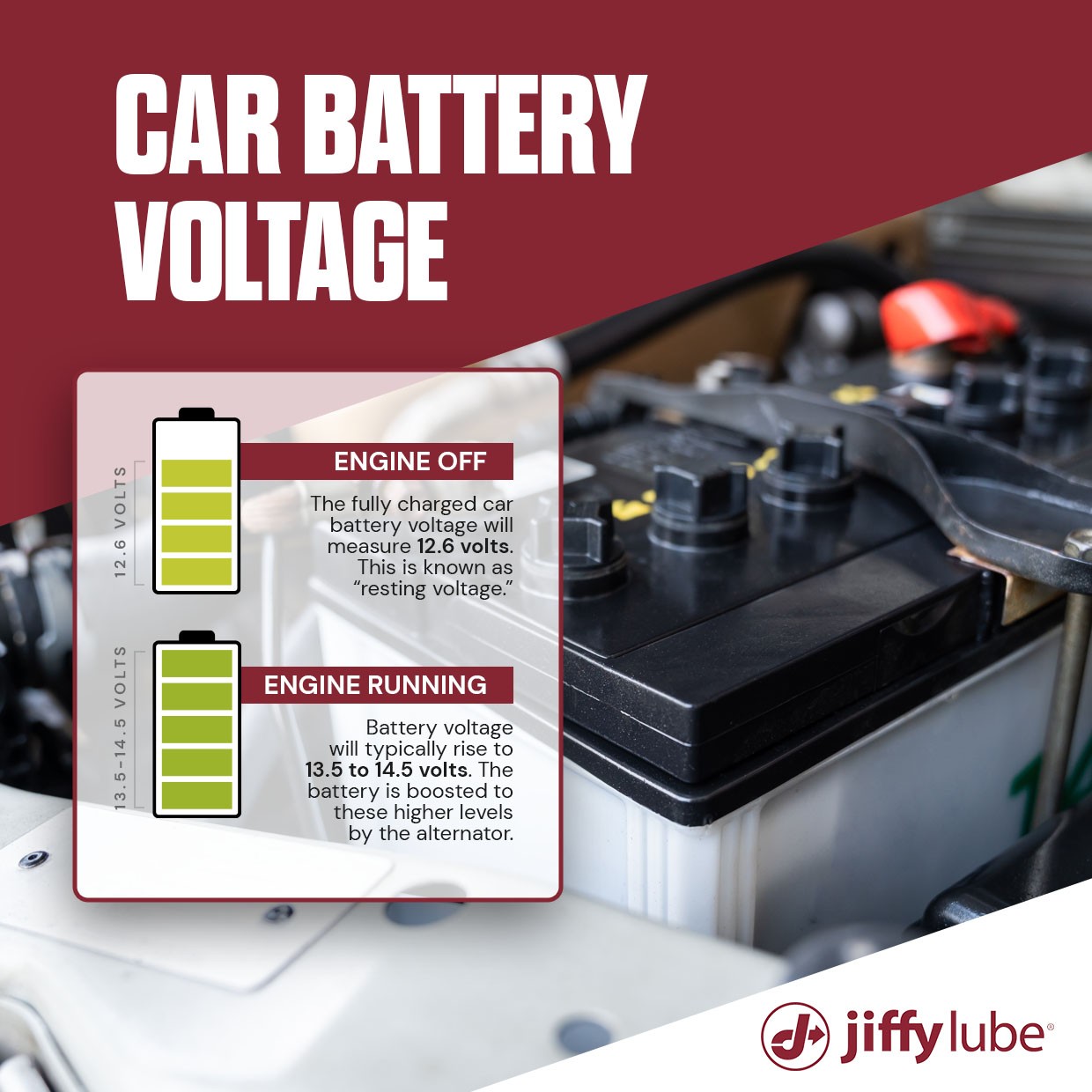Your car battery is the powerhouse behind your vehicle’s electrical system, responsible for much more than just starting your engine. From powering your windows and locks to keeping your entertainment system running, a healthy battery is crucial for a smooth driving experience. It’s natural to be curious about how this vital component works, especially when it comes to voltage.
Let’s delve into the question: How Much Voltage Should A Car Battery Have? Generally, we refer to car batteries as 12-volt batteries. However, the actual voltage readings can vary within a specific range, typically between 12.6 and 14.4 volts.
Decoding Car Battery Voltage: Resting and Charging States
To accurately assess your car battery’s health, it’s important to understand the different voltage states:
- Resting Voltage (Engine Off): When your engine is turned off and the battery is fully charged, a healthy car battery should read approximately 12.6 volts. This is known as the resting voltage, indicating the battery’s stored energy when it’s not actively charging or discharging.
- Charging Voltage (Engine Running): Once you start your engine, the alternator takes over to power your vehicle’s electrical systems and recharge the battery. In this state, the voltage reading should increase to between 13.5 to 14.5 volts. This higher voltage is necessary for the alternator to effectively replenish the battery’s charge while also supplying power to the car’s electrical components.
Understanding these voltage ranges is crucial for diagnosing potential battery issues. A reading significantly lower than 12.6 volts at rest might indicate a discharged or failing battery, while readings outside the 13.5 to 14.5 volt range when the engine is running could point to alternator problems.
How Car Batteries Power Your Vehicle: A Simple Cycle
To grasp the importance of voltage, it’s helpful to understand the basic working principle of a car battery within your vehicle’s starting and charging system:
- Energy Storage: The car battery acts as a reservoir of electrical energy, storing power through chemical reactions.
- Engine Cranking: When you turn the ignition key, the battery unleashes its stored electrical energy to the starter motor. The starter then converts this electrical energy into mechanical energy, cranking the engine to initiate combustion.
- Recharging by Alternator: After the engine starts, the alternator, driven by the engine, generates electricity. This electricity serves two primary purposes: first, it powers the vehicle’s electrical systems, and second, it recharges the battery, replenishing the energy used during engine starting.
This cycle of energy conversion and replenishment is continuous while your engine is running, ensuring that the battery remains charged and ready for the next start.
Beyond Voltage: Amperage and Cold Cranking Amps (CCA)
While voltage is a crucial aspect, amperage is another important factor in car battery performance.
- Amperage: Amperage, often measured in amps, describes the electrical current a battery can deliver. The amperage rating of a car battery is determined by the vehicle’s electrical demands, which are influenced by the number of electrical accessories and features. Vehicles with more power-hungry options typically require batteries with higher amperage ratings. Typical car battery amperage ranges from 450 to 750 CCA.
- Cold Cranking Amps (CCA): CCA is a specific rating that indicates a battery’s starting power in cold temperatures. It signifies the number of amps a 12-volt battery can deliver at 0°F (-18°C) for 30 seconds while maintaining a voltage of 7.2 volts or higher. A higher CCA rating translates to greater starting power, particularly essential in cold climates where engines are harder to start.
Maintaining Optimal Battery Voltage and Performance
Regular maintenance is key to ensuring your car battery functions correctly and maintains the appropriate voltage levels for reliable performance. It’s generally recommended to have your car battery inspected at least every 6 months or 6,000 miles, or as specified in your vehicle’s owner’s manual.
During a battery service, a qualified technician can perform several crucial checks:
- Visual Inspection: Checking for physical damage, corrosion on terminals, and secure connections.
- Terminal Cleaning: Removing corrosion buildup from battery terminals to ensure good electrical contact.
- Cable Inspection and Replacement: Assessing the condition of battery cables and replacing them if necessary.
- Connection Check: Ensuring battery connections are tight and secure.
- Battery Strength Test: Using a multimeter or specialized battery tester to measure voltage and assess the battery’s overall health.
- Fluid Level Check (if applicable): For batteries with removable caps, checking and adjusting the electrolyte fluid level.
Recognizing the Signs of Low Battery Voltage
Even with regular maintenance, car batteries can experience issues. Being aware of the symptoms of a low voltage battery can help you address problems early and avoid being stranded. Common warning signs include:
- Dim Headlights or Interior Lights: A weak battery may not provide sufficient power, resulting in noticeably dimmer lights, especially at idle.
- Illuminated Warning Lights: The “Check Engine” light or “Charging System” light on your dashboard may illuminate, indicating a potential battery or charging system problem.
- Slow Engine Cranking: If your engine cranks slowly or hesitates before starting, it could be a sign of insufficient battery voltage to power the starter effectively.
- Malfunctioning Accessories: Power windows, seats, or other electrical accessories may operate sluggishly or fail entirely if the battery voltage is low.
Trust Jiffy Lube for Battery Care and Maintenance
Your car battery is a sophisticated component vital to your vehicle’s operation. For expert battery service and maintenance, rely on the trained technicians at Jiffy Lube. When you visit a Jiffy Lube location for a battery check, you can expect a comprehensive service, including:
- Driver Style Assessment: Technicians will inquire about your driving habits to understand their potential impact on your battery and charging system.
- Thorough Inspection: A detailed visual inspection of the battery, connections, and hold-downs.
- Professional Services: Terminal cleaning, cable replacement, and connection tightening (with your approval).
- Battery Testing: Precise battery strength testing using a multimeter.
- Fluid Level Adjustment: Inspection and adjustment of battery fluid levels (if applicable).
Regular battery maintenance at Jiffy Lube can help extend your battery’s lifespan and ensure your vehicle’s starting and charging system operates efficiently, saving you time and money in the long run by preventing unexpected breakdowns and costly repairs.
For continued car care tips and to learn more about car battery lifespan and other automotive topics, visit the Jiffy Lube Resource Center. And remember, for reliable battery service and peace of mind, Jiffy Lube is here to keep you rolling.

